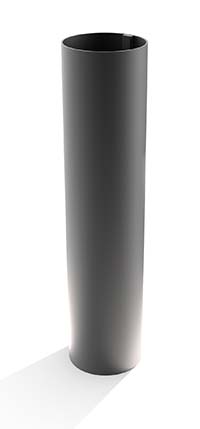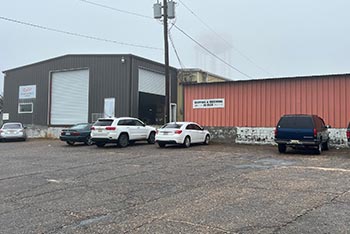The world of custom roll forming can be filled with technical jargon and industry-specific terms that may leave manufacturers feeling overwhelmed or confused. To effectively incorporate roll forming into your operations, it is crucial to have a clear understanding of the terminology surrounding this powerful forming technique.
That’s why we have curated a comprehensive Roll Forming Glossary to serve as a valuable resource for manufacturers looking to expand their knowledge in this specialized field.
In this glossary-style article, we will provide you with detailed explanations of the most relevant terms and phrases associated with custom roll forming. From the intricacies of the roll forming machinery to material properties and end product specifications, our goal is to equip you with the knowledge needed to make informed decisions when exploring roll forming solutions for your manufacturing endeavors.
By familiarizing yourself with essential roll forming terminology, you will not only gain a deeper understanding of the process and its capabilities but also be better prepared to communicate with your roll forming partners, ensuring smooth collaboration and more successful project outcomes.
Roll Forming Equipment Terminology
In the following sections, we will break down key terms and phrases related to roll forming equipment, processes, materials, and industry applications, providing you with the foundational knowledge required to navigate this versatile and efficient method in the world of metal forming. Let our Roll Forming Glossary act as your ultimate reference guide for mastering the language of custom roll-formed solutions.
Roll Forming Machine
A roll forming machine is the central equipment used in the roll forming process. It consists of a series of sequentially arranged roll tools mounted on a common machine base, which sequentially bend and shape the metal strip into the desired cross-sectional profile.
Roll Tooling or Rollers
Roll tooling, also known as rollers or roll dies, are the essential components in a roll forming machine that shape the metal strip by applying pressure and creating localized bending. Each pair of rollers is responsible for a specific bending operation, progressively forming the metal strip as it passes through the machine.
Pre-Punch
In certain custom roll forming applications, pre-punch is an operation performed before the roll forming process in which pre-defined hole patterns are punched into the metal using high-precision punch tools. The process generally happens when the hole pattern requires consistent accuracy without deforming the roll-formed profile.
Cut-Off Die
A cut-off die is a tool used at the end of the roll forming line to cut the formed profile to the desired length. The cut is made using a guillotine-like action or a flying shear mechanism without stopping the roll forming machine, allowing for a continuous, efficient production process.
Roll Forming Process Terminology
Pre-Forming Operations
Various operations may be performed on the material before entering the roll forming machine. These can include uncoiling, slitting, leveling, or pre-punching. Pre-forming operations ensure that the metal strip is ready for the roll forming process and meets the specific requirements of the desired end product.
Bending
Bending refers to the process of modifying the shape of the metal strip by applying pressure through rollers that create localized deformation. Bending occurs within the roll forming machine, as the metal strip is gradually shaped into the desired profile through a series of bending actions.
Progressive Forming
Progressive forming is the step-by-step bending and shaping of the metal strip, occurring as it moves through the roll forming machine. Each pair of rollers applies a specific bend to the metal strip, gradually forming the desired profile. This approach ensures that the complex cross-sectional shape is achieved with accuracy and consistency.
Post-Forming Operations
After the metal strip has undergone progressive forming in the roll forming machine, it may require additional operations such as welding, cutting, powder coating, or painting to complete the production process. These post-forming operations are crucial for ensuring that the final product meets precise specifications and quality standards.
Material Terminology
Strip Material
Strip material refers to the initial flat metal sheet or coil that is fed into the roll forming machine. This material can be selected from various metals or alloys, such as steel, aluminum, copper, or brass, depending on the project requirements.
Tensile Strength
Tensile strength is a critical property of the strip material used in the roll forming process. It refers to the maximum stress that a material can withstand when being pulled apart before breaking. High tensile strength materials are typically more durable and resistant to deformation during the roll forming process.
Yield Strength
Yield strength is another essential material property to consider in roll forming. It refers to the maximum stress a material can withstand without permanent deformation. Materials with high yield strength maintain their profile shape and dimensional accuracy during and after the roll forming process.
Springback
Springback is the tendency of a metal strip to partially return to its original shape after being bent or deformed during the roll forming process. This phenomenon can impact the final shape and dimensional accuracy of the roll-formed profile. By understanding and accounting for springback, roll tooling can be designed to compensate for any anticipated alterations.
Industry Application Terminology
Automotive
Roll forming plays a vital role in the automotive industry, producing components such as car door frames, seat rails, roof channels, and bumpers. The process enables the creation of lightweight, strong, and cost-efficient parts suitable for high-performance vehicles.
Construction
The construction industry relies heavily on roll forming for the manufacture of a diverse range of structural and aesthetic components, including roof panels, siding, framing, and window sections. These components exhibit high strength and durability, making them well-suited for long-lasting construction applications.
Roll Forming Design Terminology
Cross-Sectional Profile
The cross-sectional profile refers to the shape of the roll-formed product as seen from a cross-sectional view. This profile can range from simple open sections, like channels, to complex closed shapes, like tubes, depending on the application requirements. Designing an accurate and efficient cross-sectional profile is crucial for achieving the desired product functionality and structural integrity.
Flange
A flange is a protruding lip, edge, or rim that extends from the main roll-formed profile to provide stiffness, strength, or connection points for attachment to other components. In construction applications, for instance, flanges are often used for connecting roof panels to rafters and beams.
Bend Radius
The bend radius refers to the internal radius of a curved roll-formed profile. It is a critical design parameter that influences the material’s flexibility, the roll forming process’s efficiency, and the product’s structural integrity. A smaller bend radius increases the risk of material cracking and requires more rollers, while a larger radius offers more flexibility but may result in a less rigid product.
Tolerance
Tolerance is the allowable variation in dimensional accuracy for a roll-formed product. Tolerances are specified to ensure that the finished product meets the required function, fit, or assembly requirements. By understanding the acceptable tolerances for crucial dimensions in a roll-formed profile, manufacturers can optimize the roll forming process and minimize production costs.
Roll Forming Quality Assurance Terminology
Visual Inspection
Visual inspection is a fundamental quality assurance technique used to identify surface imperfections, dimensional inaccuracies, or other defects in roll-formed products. It involves a thorough examination of the product’s appearance, ensuring that it meets the established quality standards and specifications. Conducting regular visual inspections throughout the production process is effective for pinpointing and addressing issues that could impact the final product’s performance.
Quality Management System (QMS)
A quality management system is a structured framework employed by roll-forming companies to ensure that their products meet customers’ expectations and comply with applicable industry and regulatory requirements.
QMS integrates processes, resources, and procedures focused on quality assurance, product and process control, and continuous improvement, all critical to providing superior roll-formed solutions.
Environmental and Sustainability Terminology
Recyclability
Recyclability refers to the ability of a metal to be reprocessed and repurposed after its original use without losing its intrinsic properties or value. Materials like steel and aluminum, commonly used in the roll forming process, boast high rates of recyclability, making this manufacturing method more environmentally friendly and contributing to a circular economy in manufacturing industries.
Scrap Reduction
Scrap reduction is an essential aspect of the roll forming process, focusing on minimizing waste during production by optimizing material usage, enhancing process efficiency, and using scrap management practices. Reduced scrap generation not only results in considerable cost savings for manufacturers but also contributes to a more sustainable manufacturing process.
Energy Efficiency
Energy efficiency is a measure of how effectively a process uses energy resources to achieve the desired result with minimal waste or loss. Roll forming, with its continuous process and ability to produce complex profiles in a single operation, is considered an energy-efficient manufacturing method leading to reduced energy consumption and minimization of harmful emissions.
Roll Forming Software and Simulation Terminology
Computer-Aided Design (CAD)
Computer-aided design is a software tool used by roll forming engineers to create detailed digital designs of the roll-formed profiles and the corresponding roll tooling. CAD software allows for precise dimensional control, rapid design iterations, and the ability to visualize end products before actual production, making it an invaluable resource for a successful roll forming process.
Finite Element Analysis (FEA)
Finite element analysis is a numerical simulation tool used to predict and analyze product performance, material deformation, and product integrity under various loading and manufacturing conditions. By using FEA software in combination with CAD models, roll forming engineers can detect potential issues early in the design phase, optimize the profile and tooling, and reduce the risk of costly modifications or production delays.
Roll Forming Machine Maintenance Terminology
Alignment
Alignment in roll forming refers to the proper positioning and orientation of the roll forming machine components, including rollers, shafts, and gears. Proper alignment is crucial for preventing material and tooling damage, ensuring profile accuracy, and minimizing defects like bows or twists. Periodic alignment checks and adjustments can significantly improve overall machine performance and product quality.
Lubrication
Lubrication is the application of lubricants, such as grease or oil, to reduce friction and wear between moving parts in a roll forming machine. Proper lubrication is essential for extending the service life of the machine components, minimizing the potential for unplanned downtime, and maintaining efficient operation. Implementing a regular lubrication schedule and using the appropriate lubricant type are vital for proper machine maintenance.
Tooling Maintenance
Tooling maintenance involves the routine inspection, cleaning, and adjustment of the rollers and other wear-prone components in a roll forming machine. Regular maintenance helps prevent premature tool wear, minimize the potential for defects like burrs or oil canning, and ensure optimal product quality. Tooling maintenance can include techniques such as polishing, sharpening, and re-coating worn surfaces.
Machine Cleanliness
Maintaining a clean roll forming machine environment is essential for ensuring consistent product quality and minimizing the risk of contamination. Dust, debris, and excess lubricant can interfere with the proper functioning of the machine’s components or introduce defects into the roll-formed profiles. Establishing and adhering to a routine cleaning schedule can significantly improve the overall machine performance and longevity.
Securing Success in the Roll Forming Industry
Understanding and mastering the essential roll forming terminology is critical for professionals in the industry to deliver high-quality, efficient, and sustainable products. The Roller Die + Forming team is dedicated to upholding the highest standards in design, production, and innovation, while consistently adhering to the best safety practices. By leveraging cutting-edge roll forming technologies and experienced engineering, we ensure that our products meet the precise requirements of our clients across various industries.
Stay informed with key roll forming concepts in design, process, quality assurance, sustainability, as well as maintenance, safety, and compliance. Empower your company with the expertise necessary to make informed decisions and develop lasting, successful partnerships throughout the roll forming supply chain.
Whether you’re seeking a roll formed product for your construction, automotive, solar, or other industry-related projects, Roller Die + Forming is equipped to handle your unique requirements. With our extensive knowledge, exceptional customer service, and commitment to quality, we strive to exceed expectations and deliver superior results.
Don’t hesitate to contact our team of experts at Roller Die + Forming today and discover how we can help you optimize your roll-formed components and achieve your business goals. Together, let’s create a more efficient, sustainable, and successful future in the roll forming industry. Check out our roll forming tools as well!












